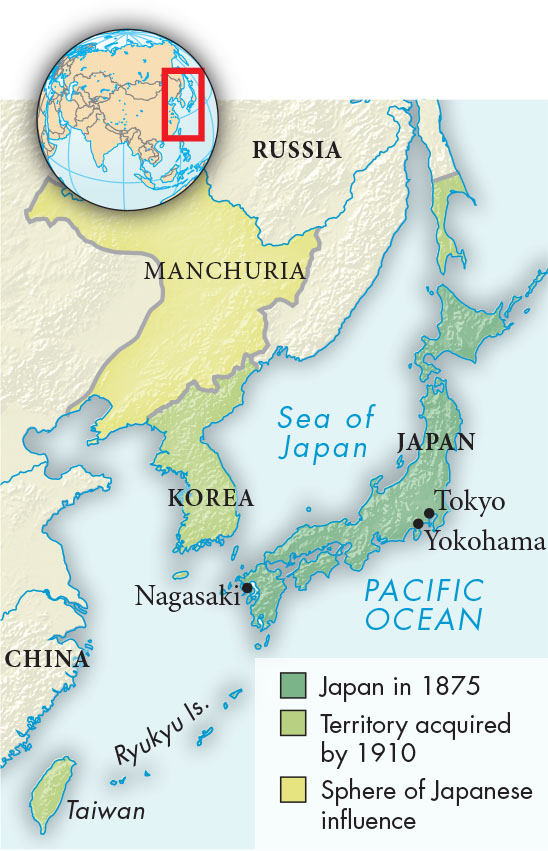Japan as an Imperial Power
During the course of the Meiji period, Japan became an imperial power, making Taiwan and Korea into its colonies. Taiwan had been a part of China for two centuries; Korea had been an independent country with a unified government since 668. The conflicts that led to Japanese acquisition of both of them revolved around Korea.
The Choso˘n Dynasty had been on the throne in Korea since 1392. Chinese influence had grown over this period as the Korean elite enthusiastically embraced Confucian teachings and studied for Chinese-
In 1871 the U.S. minister to China took five warships to try to open Korea, but left after exchanges of fire resulted in 250 Koreans dead without any progress in getting the Korean government to make concessions. Japan tried next and in 1876 forced the Korean government to sign an unequal treaty and open three ports to Japanese trade. On China’s urging, Korea also signed treaties with the European powers in an effort to counterbalance Japan.
Over the next couple of decades reformers in China and Japan tried to encourage Korea to adopt its own self-

As already noted, five years later Japan participated with the European powers in occupying Beijing to suppress the Boxer Rebellion. In this period Japan was competing aggressively with the leading European powers for influence and territory in China, particularly in the northeast (Manchuria). There Japanese and Russian imperialism met and collided. In 1904 Japan attacked Russian forces and, after its 1905 victory in the bloody Russo-
Japan also steadily gained more control over Korea. In 1907, when the Korean king proved less than fully compliant, the Japanese forced him to abdicate in favor of his feebleminded son. Korean resistance to Japan’s actions was suppressed in bloody fighting, and in 1910 Korea was formally annexed as a province of Japan.
Japan’s victories over China and Russia changed the way European nations looked at Japan. Through negotiations Japan was able to eliminate extraterritoriality in 1899 and gain control of its own tariffs in 1911. Within Japan, the success of the military in raising Japan’s international reputation added greatly to its political influence.